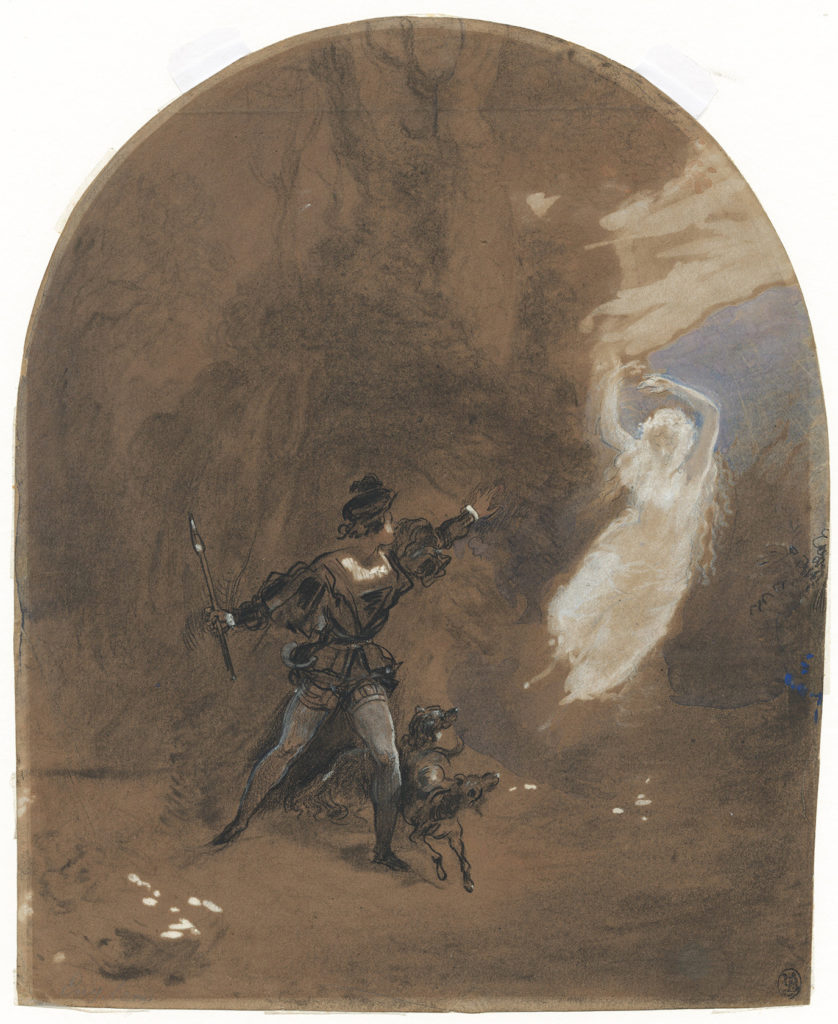Eugène Lami signed with the present sheet a wonderful example of his work as an illustrator of Walter Scott’s stories.
Referring to the narrative poem The Lady of the Lake (1810), the present sheet could be linked to two different moments in the story. It could be an interpretation of the beginning of the poem, when the hunter James Fitz-James, followed by his two dogs, meets the beautiful Ellen on Loch Katrine (Canto First, XVII). However, here Ellen isn’t represented navigating her small boat, as she does in the text. The second scene could be the apparition of Blanche of Devan to Fitz-James and his companion: “Who is this maid? What means her lay? /She hovers o’er the hollow way, /And flutters wide her mantle gray, /As the lone heron spreads his wing, /By twilight, o’er a hunted spring” (Canto Fourth, XXIII). The ghostly feminine figure, depicted with white strokes, appears to the surprised Fitz-James holding a torch in his right hand, suggesting a nocturnal setting. The figures are painted on a background of black chalk representing a forest. Some touches of blue around the phantasmal woman gives the very mysterious dimension peculiar to Walter Scott’s descriptions. Lami has been particularly skillful.
Like many French artists at the beginning of 19th century, Eugene Lami was a great reader of Walter Scott’s books. His passion for Great Britain started through his friendship with Bonington, with whom he practiced the art of watercolor in Antoine-Jean Gros’ studio. Lami first travelled in Great Britain between 1826 and 1827 before coming back to live there from 1848 to 1852. In 1826 he participated with Paul Delaroche in the illustration of Amédée Pichot’s Vues pittoresque de l’Ecosse, in which he published a lithograph representing another scene from The Lady from the Lake: Fitz-James and the death of his horse, as an illustration of Loch Katrine’s region. The iconography of our drawing can also be linked to Lami’s illustrations of different books by Walter Scott, such as the watercolor Mary Stuart and the dead body of Douglas (Victoria and Albert Museum) inspired by The Abbott (1820).






